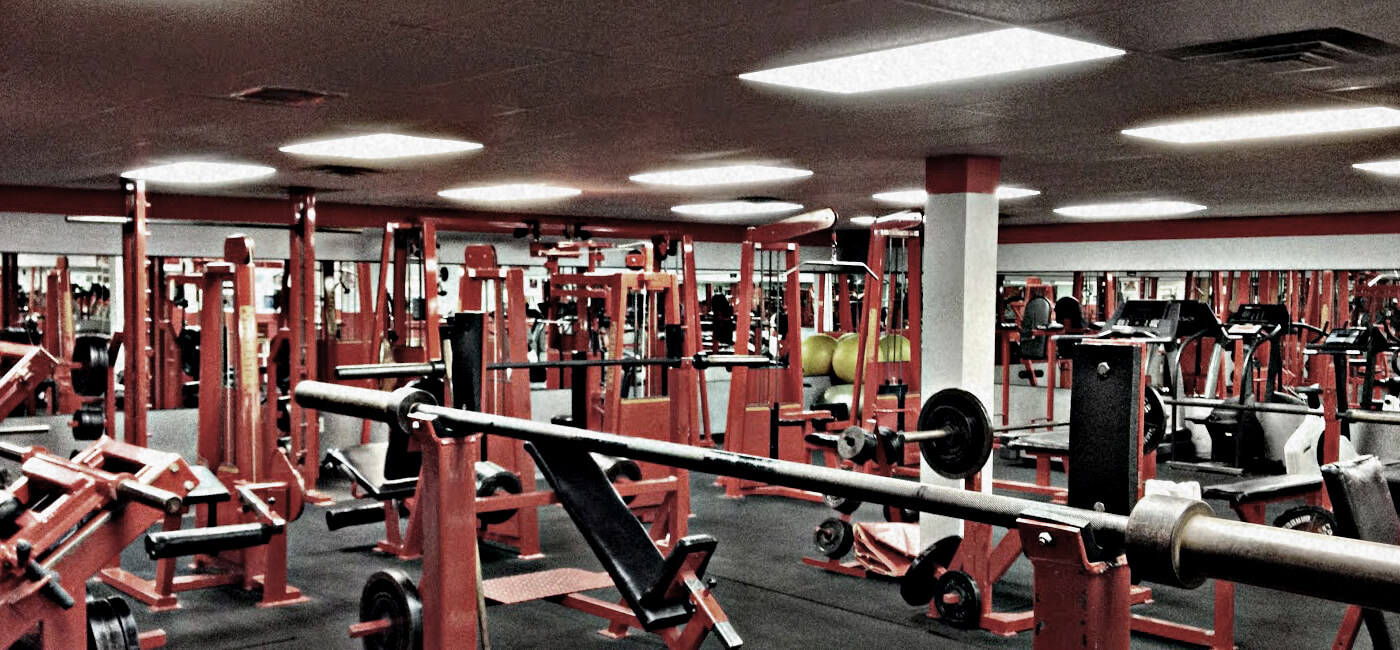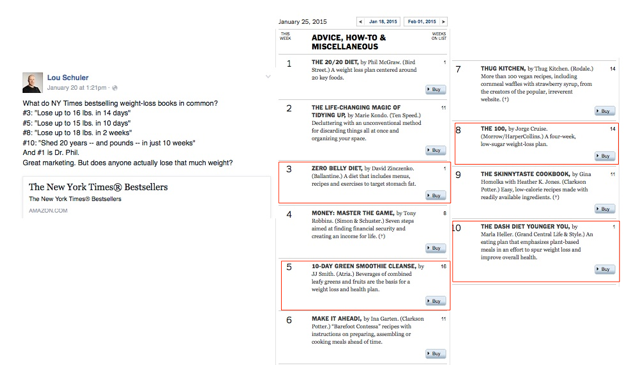45% of Americans make New Years Resolutions with weight loss being the most prominent goal.
92% of those people fail.(Reference)
The fitness industry is one of the most profitable, powerful, and persuasive industries in the World, and while there’s some headway being made, it’s failing.
A recent episode of the Planet Money Podcast on NPR finally made the public aware that many commercial gyms’ business models are centered around members not showing up.
Unsubstantiated claims based on cherry-picked research have become the norm for savvy marketers who prey on insecure men and women. I know somebody who used to sell an online fitness program based on pseudo-science that promises a six-pack in weeks. To sell his program he bought ads on the popular free dating site Plenty of Fish. After some testing he zeroed in on the most profitable market: single males age 25-40 who describe themselves as having “a few extra pounds” and receive a response to less than 1 in 10 of their messages.
On any given day, at least 3 of the books in the top 10 on Amazon have to do with the latest buzz diet or celebrity endorsed fitness or nutrition book.
Most people need to stick to one adequate program and be consistent. Promising them the next best thing is impairing their success.
This article is about why the fitness industry is failing and what needs to be done to create wide scale change.
People Are Smart
Availability of fitness information isn’t the issue. At any point somebody can walk into a magazine store and, for less then $10, pick up a glossy issue of a fitness mag and get multiple workouts that, if followed, will yield good results. Layne and Sohee Lee’s book on reverse dieting is a fantastic option.
The reason that diet plans don’t work isn’t because of a lack of information or good plans. It’s due, in large part, to lackluster adherence. A person that drinks Coke every night knows it’s not good for their health. Your client who binges on crispy chips, creamy cupcakes, or crunchy chocolate knows that it’s curtailing their weight loss plans.
Instead of confusing people over whether the real and metaphorical egg is good, or bad, or just the white is good, or it’s the best food on the planet, let’s keep it simple. First, a note on the widening gap between the converted and the unconverted.
The Elitist Gym Environment
Gyms should be a place where everybody feels comfortable. A sanctity of sorts built for self-improvement from within. So when I hear the phrase, “I need to work myself up to the gym” it knots my stomach.
The fitness industry is becoming increasingly elitist and the arrival of social media has made it worse. Tumblr, Facebook, Twitter, Pinterest, and Instagram have all developed into a source of mental masturbation for fitness pros.
People don’t share an accurate representation of their entire lives online, they selectively self-represent. We want to show others that we’re intelligent, attractive, intellectual, funny, and interesting–and sharing pictures of sweaty bodies with sloppily photoshopped motivational phrases is a way of boasting, not motivating. Did you know that people who rank lower on a scale of emotional stability share more often on Facebook? It’s a form of therapy.
I’m not saying to stop sharing these photos, but want to help you understand that you’re not doing it altruistically. These photos help motivate those who are already converted, sure, but they also widen the elitist gap dissuading those teetering on the edge of starting a fitness routine.
When was the last time that you tried something completely new?
I was working out with a pilot friend years back and became frustrated when he didn’t understand what I considered to be a simple fitness concept. His reply was “what’s the takeoff speed for a Boeing 747?”
I’d been in a gym since I was 15, had 4 years of University studying Kinesiology, and 1-2hrs of reading every night for 6 years. What was second nature to me was new to him and vice-versa.
It takes guts for people to step foot into our gyms, especially those with previous failures (like the 92% above). Be an ambassador and think deeper as to the affect your actions are having.
The fitness industry is at the forefront of preventive care and is the only way to offset rising health care costs and the burgeoning obesity rates. We must make it a comfortable place for everybody.
The 3 Things That the Fitness Industry Really Needs to be Providing
I believe that one major reason that the fitness industry is failing is because almost all the information is being presented the same way. It is being presented with a finite state of mind – that is, “Here’s a goal: go get it,” versus “you’re in this for life so here’s how you make a meaningful habitual change that starts with small steps.”
Selling a workout or nutrition plan is easy. Finding a research study to back it up while excluding all those that don’t support your theory is easy. And taking advantage of emotion and hitting on insecurities, like the dude who considers himself to have “a few extra pounds” on a free dating website, is easy.
Who are we helping and, from a financial point of view, what’s the long-term gain? I’d rather build a business around helping people achieve long-term meaningful change because I know that if I do, those customers will buy more from me. Apart from being unethical, selling on fear and emotion might work for a time but it’s a shoddy business model because it forces continual hard-selling.
Getting unmotivated or pessimistic people to believe they can achieve, radically shift their lives, and work their butts off for months before getting anywhere close to the body they want is hard–but that’s what we’re dealing with, and to do it you must consider the 3 points below:
1. Direction
The problem isn’t that people don’t have enough information. Quite the opposite; it’s that they have too much. This is not bad for business – it’s good. With no official regulatory body governing the fitness industry there are a lot of experts spouting conflicting theories claiming that they have discovered “the best way.” It’s impossible for the public to know what to do.
We’re in an age of over-information and it’s going to continue to get worse. As a result, more people will be hiring fitness professionals not to educate them on something new, but to save them time and headache by cutting through the noise and telling them what they really need to know. The age of the rep-counter has passed. We’re now in the age of the coach.
A trainer’s role has changed from information provider to information make-senser. The best answer might be to detail all the available diets and programs and allow your client to make an educated decision. The reality is that most clients will be putting their faith in you to choose what’s best and don’t want to make that decision themselves.
Offer direction by educating yourself from an unbiased view on all the available options for programming and nutrition. When training a client, don’t confuse them with all the options. Make the best choice and present it to them confidently. Then follow through on your plan avoiding the urge to “hop” to another program.
2. Support
During my tenure as a trainer I only trained one-on-one (except for a bootcamp for one summer). My views have shifted and I now believe that most people would benefit more from small group training than one-on-one. The support systems are different and very few people need somebody breathing down their neck for a full hour multiple times a week–it also breeds dependence.
CrossFit exemplifies the power of a group setting in the fitness industry. By writing the workout publicly on a board, getting everybody to openly track their results, and fostering an environment of support (i.e., the nobody gets left behind mentality) they have created communities within their training centers where everybody grows together. One trainer only has so much energy and can lend a limited amount of support over the course of the day.
In addition, creating groups both offline in a group training atmosphere and in an online personal training business for the clientele of your gym allows you to offer support without spending every waking second on email. Tell your clients that they can ask questions, post pictures, and write their thoughts in the Facebook group whenever they like. Encourage them to help and support each other. Then, once a week, hold office hours where, for two hours, they can call or have a text conversation with you asking questions – this way they can bring up more personal issues that they might not want to post in a group.
Offer support by leveraging the power of a group. Develop systems to create a community where you’re not the only one offering advice.
3. Accountability
The group setting discussed above will also go a long way in holding people accountable. Giving them the option of posting their workouts and results will increase adherence. When considering accountability, it’s important to discuss personal values, what they are and how to use them to motivate.
According to Dr. Rollo May, “An individual’s values and his anxiety, […] are conditioned by the fact that he lives in a given culture at a particular moment in the historical development of that culture.” He continues on to discuss how a man’s values are interpreted in relation to other people and their expectations.
The reason I briefly discussed values in the accountability section is that you need to have a firm grasp on what your client strongly values before you decide what to hold him accountable to. For some people conventional goal setting might work. For others, losing 5 lbs isn’t all that meaningful unless you relate it to their real purpose for exercising – not receiving snarky comments from his in-laws whenever he reaches for a second serving of food at the dinner table or whatever it may be.
Offer accountability by first figuring out what the person values and providing them with the support mechanisms specific to what’s important for them.
The Fitness Industry is Failing, but You Can Help Fix It
What we’re doing is not working. Despite the availability of information, obesity rates continue to rise. New and exciting might be fun for you but what’s important for somebody looking to finally make a change is that they have the tools to be successful not just now, but for the long-term.
About the Author
Jonathan Goodman is the author of Ignite the Fire, a book that teaches how to become a personal trainer and build a successful career. To learn more about his personal training books and free collaborative resource for trainers, go to the Personal Trainer Development Center.
thePTDC Facebook – www.facebook.com/theptdc
Personal professional Facebook – www.facebook.com/therealjongoodman
Google+ – www.google.com+jongoodman
Twitter – www.twitter.com/jon_ptdc
Website – www.theptdc.com
Ignite the Fire website – www.ignitethefirebook.com
http://www.amazon.com/Ignite-Fire-Building-Successful-Personal/dp/1505787610/ref=pd_rhf_dp_p_img_1

